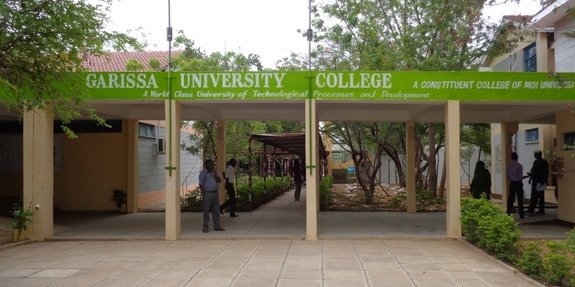ZAM tries to make sense of the massacre at Garissa University in Kenya on April 2, 2015 in which 147 young students died. Here’s what we came up with.
1. The movement that claimed responsibility for the pre-Easter mass murder of mainly Christian students, the Somali islamist Al Shabaab, is not solely fuelled by ‘jihadi’ fundamentalism. Al Shabaab (meaning “the –rebel- youth”) has its origins in an independence struggle against the Ethiopian and Western occupation of Somalia that started in 2006. Even if Al Shabaab has lost ground in recent years it still has support in Somalia.
2. Al Shabaab has adapted its PR as a ‘jihadi’ force against the entire ‘unbelieving West’ because that gives them support from Al Qaeda and ISIS. The globalised narrative as one of a ‘clash of Western and Muslim civilisations’ works for them. “Localising the conflict would dent the group’s global appeal,” says blogger Ken Opalo.
3. Al Shabaab attacks soft and civilian targets in Kenya because the Kenyan army is fighting in Somalia and has, according to Human Rights Watch, “just like all other parties” committed crimes against civilians there. “If you kill our women and children, we kill yours,” Al Shabaab says.
4. There is a Kenyan element to the violence. Some of the suicide attackers who machine-gunned the Garissa students were heard speaking the Kenyan Swahili language and one attacker, identified as Abdirahim Abdullahi, a Kenyan government official’s son, was once a ‘brilliant’ Kenyan student until he developed “crazy ideas.”
5. Al Shabaab has in recent years attracted more and more local Kenyan recruits, especially in the north east of the country. Recruiting is easy because of the marginalisation of that –mainly ethnic Somali and Muslim- region and the discrimination of the poor ethnic Somali and Muslim minority in Kenya as a whole. The Christian students who were targeted and murdered are seen as part of the dominant class.
6. Progressive Kenyans are becoming increasingly angry with their own government for what they see as fuelling terrorism. Activists, experts and commentators have accused the government of:
• Neglecting the north east and not caring about the growing resentment of the marginalised (Muslim and ethnic Somali) population in the region, who have historically been the target of violent oppression and even mass killings by the central government and military.
• Failing to discipline military generals and police authorities, who, instead of securing peace and stability, have been found to be involved in cross-border smuggling and colluding with Al Shabaab, gangsters and warlords. “Immigration and police officials can be bought by the highest bidder”, says an op-ed by Kenyan criminologist Mwenda Kailemia in The Guardian. Kenya’s twitterati agree. See HERE and HERE.
• Under-resourcing Special Forces capability: it took Kenyan Special Forces hours by road to reach Garissa University, which gave the five suicide attackers ample time to mow down rows and rows of students with impunity. Kenyans posted pictures of the vehicles the Special Forces had to use on the bad roads, grimly joking “these are their choppers (helicopters)”.
• Sending troops to Somalia ‘for the money’ that comes from Western counter-terrorism budgets, rather than devising own strategies for peace in the region. “The lack of local ownership means that (Kenyan) forces are in the fight primarily for the money”, writes blogger Ken Opalo.
• Echoing the ‘Western’ global anti-jihadi perspective, which results in increasingly targeting, raiding and harassing the Muslim /ethnic Somali population, which in turn again increases the success of Al Shabaab recruitment of resentful youth from these communities. Immediately after the Garissa attack, Muslim residents of Nairobi’s ethnic Somali suburb Eastleigh were harassed by police again. “They are radicalising communities”, tweeted activist Ory Okolloh.
• Simply going through the motions of making speeches and promising action, then slumping back into a stupor until the next attack. Twitter makes –again grim- fun of this ‘accept-and-move-on-methodology’.
7. Ethiopia also fights Al Shabaab in Somalia, but suffers practically no terror attacks in its own country. Observers say their domestic security policy is much better than Kenya’s and Kenya should learn from it.
8. Many Kenyans are now using social media to pressurise the government to change its ways with regard to all the above. They also challenge the African Union and African leaders on their passivity: “I have not seen the African Presidents who rushed to Paris after the Charlie Hebdo massacre rush to Nairobi”, tweeted Jibrin Ibrahim among many others with similar comments.
9. Individual Kenyans are flocking to the Chiromo mortuary to offer food and (in the case of doctors and counsellors) professional skills to the bereaved, whilst exposing the government for failing to provide same.
10. Some established Kenyan media draw criticism for interviewing politicians rather than the affected families and local witnesses. Kenyans on social media fill the gap, reporting the heroism of locals who helped fleeing students; the search by desperate parents to identify bodies and the stories of families. They remember the 147 who died by posting names, pictures and details of their lives. See HERE and HERE.
Hashtags are #147Notjustanumber and #Theyhavenames. “Her mother sold two cows to pay for her education”, reads one memorial. And “He was nineteen- an only child”, another. “I want each name to have a story”, writes author Binyavanga Wainaina in an article on Africa is a Country. “We are not a nation if we can’t properly and fully memorialise every citizen we lose.”


